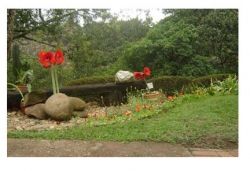Ladybird Landscapes - Amaryllis: Adding colour to Durban2014-10-27 Amaryllis adds value to your home and garden. They will flower for you if you place them in a dark dry place during part of the winter - the ones shown here go into the garage. Having them in pots offers the owner the choice of placing them in a focal area of your garden or indoors when they flower. The Amaryllis is simply a pretty addition to the garden. It complements Agapanthus beautifully and is often used in conjunction with this flower. They also attract bees, which are an important part of establishing a healthy, balanced ecology. Natural distribution The Amaryllis belladonna grows naturally in the South-western Cape of South Africa. This area is known for its abundance and diversity of flora, and the Amaryllis belladonna is an elegant addition to the gorgeous landscapes that adorn the countryside. The bulbs do well in arid conditions, often springing up after fires in the bushveld. With all of this natural wealth, there is also a healthy population of insects, birds and other animals that occupy the same natural habitat. Growing Amaryllis belladonna in your garden This plant is fairly easy to grow from seed. These seeds take about two weeks to germinate. They require very porous soils, and even do well in rock gardens. The Amaryllis belladonna does particularly well dotted around between conventional ground cover or in pots. Once established, they do not need much care or attention, flourishing on their own. This makes them easy to have in just about any garden.
The seeds are naturally released during the winter months by the wind. However, they will only begin flowering in about three to six years. In addition, clumps of Amaryllis belladonna bulbs can be split during the dormant period. This bulb must then be planted immediately with their neck at the same level as the soil. In terms of pollination by insects, bees seem to be the most common contributor to this process. |
